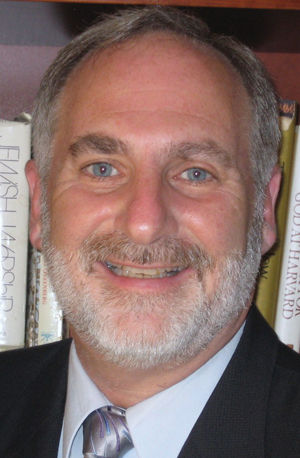Case for Jewish survival must go viral
Published November 12, 2015
Last week, the rabbis of St. Louis met with Lord Jonathan Sacks, the former chief rabbi of the British Commonwealth. He is an impressive Jewish leader, a man of great learning, intellect and leadership. I had the opportunity to ask him a question that preoccupies me.
My question was prompted by his contribution to a Commentary magazine symposium (rabbisacks.org) as to what the world Jewish community would look like in 2050. Sacks presented two scenarios: in one, Jews worldwide were flourishing; in the other, they were disappearing.
He reviewed the two scenarios before answering my question, which was, “How?”
How can we avoid the disastrous scenario he presented, and how can we achieve the appealing one? Humble as he is, he did not offer a specific solution tailored to the American Jewish experience. But he did briefly share his experiences as the chief rabbi of the Commonwealth, which afforded him influence and authority that no one rabbi or even a group of rabbis has in the American experience.
Sacks spoke briefly and generally about the hard work of persuading Jews, and the “success” he had in freezing the intermarriage rate for more than 25 years now at 25 percent.
Population studies, as well as our direct experiences, clearly show an American Jewish population in serious decline. If trends are not halted, in 2050 the American Jewish community is likely to exist in a form that is largely unrecognizable from what it is now and what it has been for the past several generations. The 2013 Pew Research Center survey, “A Portrait of Jewish Americans,” found that 2 million Jews whose parents were both Jewish no longer identified themselves as Jews.
One view is to combat the issue through more diversity and with even greater funding. I believe that is a mistake. While funding changes may make some small differences, the looming disaster is not primarily a financial one, and a larger influx of money or a reallocation of large sums of money cannot avert it.
Furthermore, there is so much diversity, from shuls/synagogues/temples to nonreligious organizations, that I am not convinced that more diversity is the answer to the question of the Jewish future.
In my view, Judaism is not the primary underlying problem. Claims that Judaism is the problem are pretexts. Our religious heritage is rich, ethical, wise and compassionate; it is not the source of the trouble. The problem is in the attitudes of younger generations, their parents and grandparents toward Judaism, in contrast and in competition (at least in time) with the obligations, pleasures and opportunities of American life outside Judaism.
This is where Jewish connections weaken and dissolve. We need to educate Jews of all ages and about our long, noble, sacred and world-changing heritage.
Sacks’ suggestion — yes, I am finally coming to it — is essentially to embrace the opportunity presented by social media and videos. In England, for example, he changed attitudes toward Israel with a well-crafted video that went viral, one that made people smile when they heard the name Israel.
So I want to embrace and adapt his suggestion. We, the Jews of St. Louis, could follow his example and create a video campaign that makes people smile and that inspires Jews to re-embrace — seriously — our rich heritage.
Unlike expensive TV commercials run by values.com, the real investment in a social media video is one of time and talent to create a smart and sophisticated production. And if we could solicit a team to produce a series of short videos — not just a one-time-and-forget-it production, but one that has a long-range plan and will avoid alienating others — maybe here, in undersized Jewish St. Louis, we could start a national American-Jewish renaissance.
What would the first video be like? Perhaps something energetic and uplifting, including pictures and voices and maybe even a jingle or a melody, in which Jews express pride in being Jewish, with specifics. It would look good, sound good and be well-produced. And, of course, for reasons of integrity and for enduring success, it would be real, genuine and authentic.
Then we could follow up the first video with something a little more substantive. And maybe this would spur Jews in other places to create their own versions.
With Rabbi Sacks’ inspiration, we have a chance to do something really worthwhile.
If you have the talent to contribute or if you have a specific idea, please feel free to contact me at [email protected].
Lights, camera, action — 2050 is coming.















